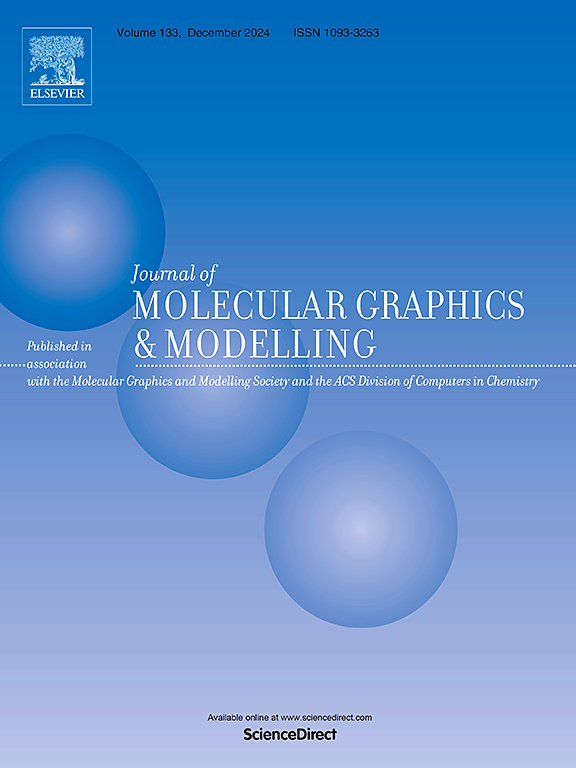Electronic analysis of 1-ethyl-3-methyl imidazolium halide adsorption on AlN nanoflakes
IF 2.7
4区 生物学
Q2 BIOCHEMICAL RESEARCH METHODS
引用次数: 0
Abstract
This study explores the interaction of AlN nanoflakes with ionic liquids (ILs) consisting of 1-ethyl-3-methylimidazolium cations and halide anions (fluoride, chloride, bromide), aiming to enhance AlN nanoflake performance in energy applications. ILs adsorb onto the nanoflake surface, with halide ions attaching to aluminum atoms, indicating strong interactions that improve the material's electronic properties. Adsorption energy is the highest for fluoride and lowest for chloride, reflecting the strength and proximity of interaction. Thermodynamic analysis shows the adsorption is exothermic, with fluoride exhibiting the most substantial interaction due to its small size and high electronegativity. This significantly alters the electronic properties of the nanoflake, increasing dipole moment, redistributing charge, and reducing the HOMO-LUMO gap. Additionally, the enhanced nonlinear optical (NLO) properties make these IL-modified AlN nanoflakes promising candidates for energy storage and optical applications. These changes suggest improved conductivity and potential for enhanced supercapacitor performance, offering valuable insights for optimizing AlN nanoflakes in energy storage.

求助全文
约1分钟内获得全文
求助全文
来源期刊

Journal of molecular graphics & modelling
生物-计算机:跨学科应用
CiteScore
5.50
自引率
6.90%
发文量
216
审稿时长
35 days
期刊介绍:
The Journal of Molecular Graphics and Modelling is devoted to the publication of papers on the uses of computers in theoretical investigations of molecular structure, function, interaction, and design. The scope of the journal includes all aspects of molecular modeling and computational chemistry, including, for instance, the study of molecular shape and properties, molecular simulations, protein and polymer engineering, drug design, materials design, structure-activity and structure-property relationships, database mining, and compound library design.
As a primary research journal, JMGM seeks to bring new knowledge to the attention of our readers. As such, submissions to the journal need to not only report results, but must draw conclusions and explore implications of the work presented. Authors are strongly encouraged to bear this in mind when preparing manuscripts. Routine applications of standard modelling approaches, providing only very limited new scientific insight, will not meet our criteria for publication. Reproducibility of reported calculations is an important issue. Wherever possible, we urge authors to enhance their papers with Supplementary Data, for example, in QSAR studies machine-readable versions of molecular datasets or in the development of new force-field parameters versions of the topology and force field parameter files. Routine applications of existing methods that do not lead to genuinely new insight will not be considered.
 求助内容:
求助内容: 应助结果提醒方式:
应助结果提醒方式:


